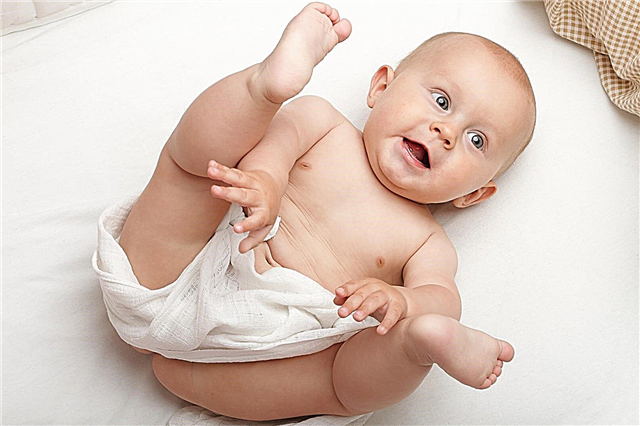
Breathing disorder occurs in babies at almost any age. Even newborn babies can get sick. Timely diagnosis and timely prescribed treatment lead to a complete recovery.

What it is?
Inflammation of the bronchial mucosa, provoked by any reason, is called acute bronchitis. There are a great variety of reasons that contribute to the development of the disease. The peculiarity of the structure of the bronchial tree contributes to the appearance of this disease in babies.
The greatest number of cases of the disease is usually recorded during the cold season. There is also an increase in the incidence of acute bronchitis during epidemics of influenza or infectious colds. Boys get sick as often as girls. The peak incidence occurs at the age of 4-10 years.

Causes
Every child can get bronchitis. This is due to many reasons that cause this disease. In some cases, there are even several different provoking factors acting simultaneously and causing the disease.
Acute bronchitis can be caused by:
Viral infections. They are the most common cause of illness. Among the active pathogens: influenza viruses, parainfluenza, adenoviruses, RS viruses. They persist well in the external environment and are able to spread quickly. Getting on the mucous membranes of the upper respiratory tract, microbes cause inflammation and the appearance of adverse symptoms of the disease.
Bacteria. Staphylococci, streptococci, moraxella, Pseudomonas aeruginosa, as well as anaerobic microorganisms are often the causative agents of bronchitis. These forms of the disease are usually much more severe than viral ones. Antibiotic prescription is required.
Exposure to toxic substances. Emissions from industrial plants and factories contribute to bronchial damage and the development of bronchitis. The smallest components of toxic products can be in the air for a long time. When they enter the bronchi, they cause trauma and give rise to bronchial obstruction.
Congenital defects in the structure of the bronchi. Respiratory organs stop forming in the third trimester of pregnancy. The disease detected at this time in the expectant mother contributes to the underdevelopment of the child's respiratory system.
Ingress of foreign bodies... A sudden blockage of the bronchial lumen leads to the development of adverse symptoms of bronchitis.
Fungal infection. It occurs in weakened babies or children with immunodeficiencies.
How does it arise?
In childhood, the bronchi are very narrow and have a small diameter. This facilitates easier penetration of the infection, which causes a strong inflammatory process.
Outside, the epithelium of the bronchi is covered with cilia. They help cleanse the bronchial tree from various particles that can get inside. In babies, the cilia are not yet functioning well enough, which also contributes to the development of bronchitis.

During illness, excess phlegm is produced. This is largely due to the fact that the number of glands that produce mucus in the bronchi is much larger in babies than in adults. Inflammation activates them, causing phlegm and violent coughing.
Weak respiratory muscles cause a decrease in active breathing in the acute period of the disease. A small volume of the lungs promotes the active reproduction of pathogens and an increase in the inflammatory process. The younger the child is, the more severe the disease is.
The incubation period can vary. This largely depends on the cause of the disease. For viral infections, it lasts 3-5 days. For bacterial bronchitis, it is usually 7-10 days. Toxic effects can manifest themselves in different ways: from several days to 1 month. In infants, the disease is much more severe, and the incubation period may be shorter.

Classification
All forms of acute bronchitis can be classified according to their severity and clinical forms. This division helps doctors choose the right treatment, which contributes to the complete recovery of the baby in a short time.
In clinical form, acute bronchitis can be bronchiolitis. In this process, the smallest bronchi and bronchioles are damaged. The disease is most severe. Most often occurs in babies at 2 years old. During an exacerbation of the disease, the baby is hospitalized in a hospital equipped with a resuscitation and intensive care unit.

By severity:
Lungs... They proceed with mild symptoms. There are no complications. Lasts 7-14 days. They are well treated. After high-quality therapy, they pass without a trace.
Medium. They are accompanied by an increase in temperature up to 38 degrees and the appearance of a harsh debilitating cough. The child's well-being suffers greatly. Treatment is long, there are complications. If the therapy is ineffective, hospitalization in the pediatric department is required.
Heavy. They require compulsory treatment of the child in a hospital. Dangerous by the development of unfavorable and dangerous complications. Often occur with symptoms of respiratory failure.

Symptoms
After the end of the incubation period, the first characteristic signs of the disease appear. The severity of such manifestations depends on the child's immunity, age, and the presence of chronic concomitant diseases. Young children suffer the disease more heavily than schoolchildren.
Acute bronchitis is characterized by the following symptoms:
Cough. It can be harsh and paroxysmal. In severe cases, it does not stop even at night. A prolonged cough can even contribute to vomiting.
An increase in body temperature to 37-39 degrees.
Redness of the throat and runny nose. Typical for viral and bacterial infections.
Dyspnea. Babies begin to breathe quickly. The number of respiratory movements per minute increases by 10% or more.
Noisy breathing. When air passes through the inflamed and tightly closed bronchi, resistance increases. This process causes noisy breathing, which becomes audible from the outside. In some cases, even bubbling rales can be heard.
General weakness. Babies become lethargic, less active. They eat poorly, are sleepy. A persistent cough makes the baby very anxious and easily excitable.
Soreness in chest when breathing. Frequent and prolonged hacking cough leads to pain during breathing.
Excessive sweating. It is a manifestation of severe intoxication.
Diagnostics
When the first symptoms of the disease appear, be sure to show the baby to the pediatrician. The doctor with the help of a phonendoscope will be able to listen to specific wheezing that appears with bronchitis. After examining the child, the doctor will prescribe the entire necessary complex of treatment.
Usually, to establish the cause of the disease and the correct diagnosis, they are prescribed:
General blood analysis... An increased number of leukocytes with accelerated ESR indicates the presence of an infectious process. Changing the parameters in the leukocyte formula helps to establish the presumptive cause of the disease: viral or bacterial.
Biochemistry. It is carried out to clarify the accompanying complications. Helps to determine the presence of damage to the kidneys or other internal organs during a severe course of the disease.
Radiography. It is performed on babies over one year old. The images allow to clarify the nature of the damage, as well as to carry out differential diagnosis with other diseases.
Sputum analysis to identify the pathogen. It is usually carried out in the first days of the disease. Helps to establish the exact cause of the disease.
Sputum culture with antibiotic susceptibility testing. The disadvantage of the study is the long term of the analysis. Usually the result is ready only after 7-10 days. Allows you to accurately identify the pathogen and establish its sensitivity to various antibacterial drugs.
Determination of blood gases. Measurement of blood oxygen saturation indicators is carried out in severe disease.
Computed tomography or magnetic resonance imaging. These methods are used only in difficult cases, when the diagnosis is very difficult. These studies are highly informative and allow you to accurately obtain the result. They are carried out in older children who are unable to move during the entire examination.
Complications and consequences
Mild forms of the disease are usually calm. After adequate treatment, the baby can forget for a long time that he once suffered from bronchitis. However, complications may arise in severe cases. In some cases, they are quite dangerous.
The most common complication of viral or bacterial bronchitis is development of pneumonia. It usually occurs in weak and often sick babies. A low level of immunity leads to the rapid spread of the inflammatory process to the lungs. Pneumonia can develop rapidly. This significantly disrupts the baby's condition, and makes the disease worse.
Another, no less dangerous complication is abscess formation - a cavity in the lung that is filled with pus. They are usually formed with improperly selected antibacterial treatment, as well as with severe depletion of the child's body during the period of illness. Treatment of this complication is carried out only in a hospital setting.

With improperly selected therapy, acute bronchitis can turn into chronic. This option happens with insufficient follow-up treatment. After prescribing medicines, the baby begins to feel much better already on the 3-4th day of illness.
Some mothers stop giving their child antibiotics or antitussives at this time, or reduce their dosage on their own. This leads to the chronization of the process and the development of possible exacerbations in the future.
Acute bronchiolitis can also become chronic. This form of the disease is most dangerous by the development of persistent respiratory failure. As a result of the disease, there is a strong and constant narrowing of the lumen of the bronchi. Air with oxygen dissolved in it practically cannot get into the lungs. This leads to the development of respiratory failure... Treatment is carried out in a surgical department.

Treatment
According to clinical guidelines, which provide a detailed description of how acute bronchitis is treated, a range of different drugs are used to eliminate adverse symptoms.
For the treatment of acute bronchitis, the following are prescribed:
Antitussive and expectorant drugs. They help to thin the phlegm and improve its discharge. "Ambroxol", "Lazolvan", "Flavamed", "Sinekod", "Gidelix" will help to eliminate cough and normalize breathing. Usually appointed for 7-10 days, 2-3 times a day. The dosage and frequency is chosen by the attending physician, taking into account the age and condition of the child.
Antipyretic... They are used when the temperature reaches above 38 degrees. Paracetamol-based medicines are prescribed. Long-term use can cause adverse side effects.
Antiviral. They can be prescribed in the form of suppositories, nasal drops or tablets. Interferon is used to activate local immunity. The drug is available in the form of nasal drops or aerosol.
Antibiotics. Usually drugs of a wide spectrum of action are used. It is most effective to prescribe antibiotics only after bacterial culture of sputum to determine sensitivity to them. The most commonly used are: "Suprax", cephalosporin preparations, "Sumamed", "Flemoxin Solutab" and others. The course dose and duration of admission are chosen by the attending physician, taking into account the severity of the disease.
Bronchodilators. They are used for obstructive acute bronchitis to eliminate obstruction. Salbutamol-based preparations quickly relieve bronchial spasm and improve breathing. The combined means "Berodual" helps to cope with even the most severe obstruction.
Hormones... They are used only for allergic bronchitis. They are usually prescribed by inhalation. Systemic reception can contribute to the appearance of side effects. When prescribing hormone therapy, it is recommended to regularly conduct spirometry to assess respiratory function.
Warm, abundant drink. Promotes faster removal of toxins from the body. Fruit and berry compotes, as well as fruit drinks and decoctions are perfect as drinks. The baby should receive at least a liter of liquid per day. It is recommended to supplement babies with boiled water.
Percussion massage. Light tapping and vibrating movements along the chest will improve sputum flow and improve breathing. You can massage with your child lying on the bed with his head down. This position promotes better expectoration of phlegm and a decrease in coughing.
Breathing exercises. Improves breathing and helps to reduce bronchial obstruction. Recommended for daily use. The duration of the exercise is 10-15 minutes.
Prevention
In order to prevent the development of the disease, you should remember to observe the following preventive measures:
Strengthen your baby's immunity. Active walks in the fresh air and good nutrition, enriched with vitamins and minerals, will improve the functioning of the immune system.
Treat chronic illnesses. Frequent exacerbations of sinusitis or otitis media ultimately contribute to the development of bronchial inflammation in the child. Timely treatment of the upper respiratory tract will help prevent bronchitis in the future.
Use special humidifiers. Too dry air in living quarters causes drying of the mucous membranes and can even contribute to the development of bronchitis. Humidifiers help create the right humidity and microclimate in the room. Such devices are simply necessary for all babies suffering from bronchial diseases.
Avoid overworking and overworking your child. A weakened child's body is simply not able to resist infections. The correct daily routine and adequate sleep will improve the functioning of the immune system and prevent illness.


With well-chosen treatment, acute bronchitis is completely cured. After a couple of weeks, babies become healthier and more active. Timely therapy allows you to cope with the disease in a short time.
For more information on acute bronchitis, see the program of Dr. Komarovsky.



